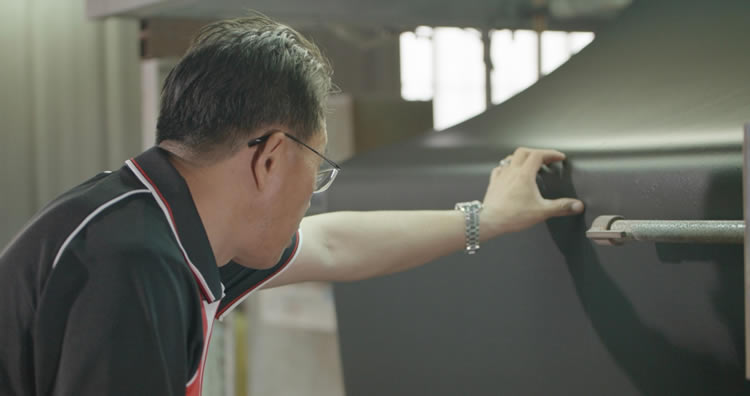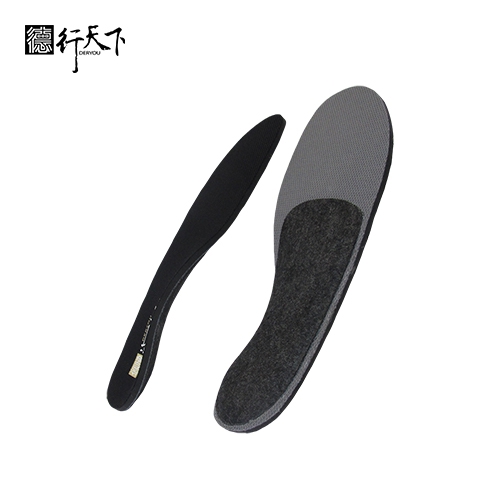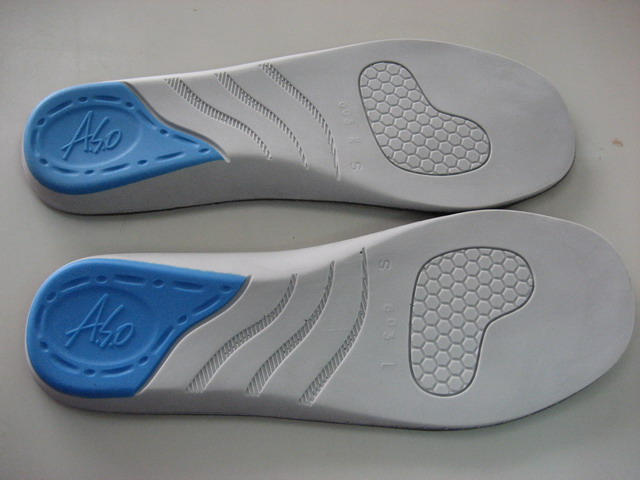Introduction – Company Background
GuangXin Industrial Co., Ltd. is a specialized manufacturer dedicated to the development and production of high-quality insoles.
With a strong foundation in material science and footwear ergonomics, we serve as a trusted partner for global brands seeking reliable insole solutions that combine comfort, functionality, and design.
With years of experience in insole production and OEM/ODM services, GuangXin has successfully supported a wide range of clients across various industries—including sportswear, health & wellness, orthopedic care, and daily footwear.
From initial prototyping to mass production, we provide comprehensive support tailored to each client’s market and application needs.
At GuangXin, we are committed to quality, innovation, and sustainable development. Every insole we produce reflects our dedication to precision craftsmanship, forward-thinking design, and ESG-driven practices.
By integrating eco-friendly materials, clean production processes, and responsible sourcing, we help our partners meet both market demand and environmental goals.


Core Strengths in Insole Manufacturing
At GuangXin Industrial, our core strength lies in our deep expertise and versatility in insole and pillow manufacturing. We specialize in working with a wide range of materials, including PU (polyurethane), natural latex, and advanced graphene composites, to develop insoles and pillows that meet diverse performance, comfort, and health-support needs.
Whether it's cushioning, support, breathability, or antibacterial function, we tailor material selection to the exact requirements of each project-whether for foot wellness or ergonomic sleep products.
We provide end-to-end manufacturing capabilities under one roof—covering every stage from material sourcing and foaming, to precision molding, lamination, cutting, sewing, and strict quality control. This full-process control not only ensures product consistency and durability, but also allows for faster lead times and better customization flexibility.
With our flexible production capacity, we accommodate both small batch custom orders and high-volume mass production with equal efficiency. Whether you're a startup launching your first insole or pillow line, or a global brand scaling up to meet market demand, GuangXin is equipped to deliver reliable OEM/ODM solutions that grow with your business.



Customization & OEM/ODM Flexibility
GuangXin offers exceptional flexibility in customization and OEM/ODM services, empowering our partners to create insole products that truly align with their brand identity and target market. We develop insoles tailored to specific foot shapes, end-user needs, and regional market preferences, ensuring optimal fit and functionality.
Our team supports comprehensive branding solutions, including logo printing, custom packaging, and product integration support for marketing campaigns. Whether you're launching a new product line or upgrading an existing one, we help your vision come to life with attention to detail and consistent brand presentation.
With fast prototyping services and efficient lead times, GuangXin helps reduce your time-to-market and respond quickly to evolving trends or seasonal demands. From concept to final production, we offer agile support that keeps you ahead of the competition.
Quality Assurance & Certifications
Quality is at the heart of everything we do. GuangXin implements a rigorous quality control system at every stage of production—ensuring that each insole meets the highest standards of consistency, comfort, and durability.
We provide a variety of in-house and third-party testing options, including antibacterial performance, odor control, durability testing, and eco-safety verification, to meet the specific needs of our clients and markets.
Our products are fully compliant with international safety and environmental standards, such as REACH, RoHS, and other applicable export regulations. This ensures seamless entry into global markets while supporting your ESG and product safety commitments.
ESG-Oriented Sustainable Production
At GuangXin Industrial, we are committed to integrating ESG (Environmental, Social, and Governance) values into every step of our manufacturing process. We actively pursue eco-conscious practices by utilizing eco-friendly materials and adopting low-carbon production methods to reduce environmental impact.
To support circular economy goals, we offer recycled and upcycled material options, including innovative applications such as recycled glass and repurposed LCD panel glass. These materials are processed using advanced techniques to retain performance while reducing waste—contributing to a more sustainable supply chain.
We also work closely with our partners to support their ESG compliance and sustainability reporting needs, providing documentation, traceability, and material data upon request. Whether you're aiming to meet corporate sustainability targets or align with global green regulations, GuangXin is your trusted manufacturing ally in building a better, greener future.
Let’s Build Your Next Insole Success Together
Looking for a reliable insole manufacturing partner that understands customization, quality, and flexibility? GuangXin Industrial Co., Ltd. specializes in high-performance insole production, offering tailored solutions for brands across the globe. Whether you're launching a new insole collection or expanding your existing product line, we provide OEM/ODM services built around your unique design and performance goals.
From small-batch custom orders to full-scale mass production, our flexible insole manufacturing capabilities adapt to your business needs. With expertise in PU, latex, and graphene insole materials, we turn ideas into functional, comfortable, and market-ready insoles that deliver value.
Contact us today to discuss your next insole project. Let GuangXin help you create custom insoles that stand out, perform better, and reflect your brand’s commitment to comfort, quality, and sustainability.
🔗 Learn more or get in touch:
🌐 Website: https://www.deryou-tw.com/
📧 Email: shela.a9119@msa.hinet.net
📘 Facebook: facebook.com/deryou.tw
📷 Instagram: instagram.com/deryou.tw
Innovative pillow ODM production solution in Taiwan
Are you looking for a trusted and experienced manufacturing partner that can bring your comfort-focused product ideas to life? GuangXin Industrial Co., Ltd. is your ideal OEM/ODM supplier, specializing in insole production, pillow manufacturing, and advanced graphene product design.
With decades of experience in insole OEM/ODM, we provide full-service manufacturing—from PU and latex to cutting-edge graphene-infused insoles—customized to meet your performance, support, and breathability requirements. Our production process is vertically integrated, covering everything from material sourcing and foaming to molding, cutting, and strict quality control.Taiwan custom product OEM/ODM services
Beyond insoles, GuangXin also offers pillow OEM/ODM services with a focus on ergonomic comfort and functional innovation. Whether you need memory foam, latex, or smart material integration for neck and sleep support, we deliver tailor-made solutions that reflect your brand’s values.
We are especially proud to lead the way in ESG-driven insole development. Through the use of recycled materials—such as repurposed LCD glass—and low-carbon production processes, we help our partners meet sustainability goals without compromising product quality. Our ESG insole solutions are designed not only for comfort but also for compliance with global environmental standards.Vietnam custom neck pillow ODM
At GuangXin, we don’t just manufacture products—we create long-term value for your brand. Whether you're developing your first product line or scaling up globally, our flexible production capabilities and collaborative approach will help you go further, faster.China insole OEM manufacturer
📩 Contact us today to learn how our insole OEM, pillow ODM, and graphene product design services can elevate your product offering—while aligning with the sustainability expectations of modern consumers.Taiwan graphene product OEM service
The SEED/Harvest method enhances CRISPR-Cas9 technology to enable precise, efficient genomic edits in fruit flies, opening new possibilities for genetics and medical research. A new CRISPR-Cas9 based method called SEED/Harvest integrates the Single-Strand Annealing repair pathway to modify the genome of fruit flies more efficiently and without residual damage. This technique allows for precise and efficient DNA modifications across the genome, facilitating research on protein functions in various tissues and developmental stages, potentially benefiting genetics, biotechnology, and medical research. A team headed by Prof. Markus Affolter at the Biozentrum of the University of Basel has advanced CRISPR/Cas technologies with a novel method that enables more precise and seamless tagging of proteins at the genetic level. This innovation holds great potential to enhance protein research in living organisms and expand opportunities in medical research. With the revolutionary CRISPR/Cas technology, the DNA of living organisms can be precisely altered. Using a guide RNA that recognizes a specific DNA sequence, Cas9 protein is recruited to that sequence and cuts the DNA. This targeted cut allows the DNA to be repaired or altered at this specific location. Prof. Markus Affolter’s team at the Biozentrum, University of Basel, has now developed a new method called SEED/Harvest in the fruit fly (Drosophila melanogaster). This method combines the CRISPR-Cas9 technique with the Single-Strand Annealing (SSA) repair pathway, enabling genome-wide changes to be carried out more efficiently and without leaving unwanted scars. The study has been published in Developmental Cell. Two methods combined The SEED/Harvest method proceeds in two steps. In a first step, the researchers introduced a marker gene into the desired DNA site within a protein-coding region. This marker is placed at the targeted location and is used to isolate successful modifications. In a second step, the marker is excised and the DNA breakpoints are repaired by the Single-Strand Annealing (SSA) repair pathway. “This enables us to cut the DNA seamlessly while maintaining its full function,” explains first author Gustavo Aguilar. “The combination of both methods makes it possible to mark any desired protein in the genome without collateral damage, allowing us to study the functions of proteins in living organisms.” More precise and efficient “Since we would like to introduce and analyze changes in the DNA throughout the genome for our research, the method must be both precise and efficient,” explains Affolter. “And the SEED/Harvest method is both. It combines the most robust screening of successful insertions and all the advantages of seamless tagging.” New research opportunities One of the advantages of the SEED/Harvest method is that proteins can be labeled in specific tissues and cell types. “We can now control and determine in various tissues and developmental stages when and where genes are activated or inactivated” adds Gustavo Aguilar. This opens up new possibilities for research to investigate the dynamics of proteins systematically in living cells in real-time. This method is not only significant for genetics and biotechnology. “The SEED/Harvest method could also be of interest for medical research, for example, to identify defects caused by disease genes,” says Affolter. Reference: “Seamless knockins in Drosophila via CRISPR-triggered single-strand annealing” by Gustavo Aguilar, Milena Bauer, M. Alessandra Vigano, Sophie T. Schnider, Lukas Brügger, Carlos Jiménez-Jiménez, Isabel Guerrero and Markus Affolter, 5 July 2024, Developmental Cell. DOI: 10.1016/j.devcel.2024.06.004
The MoTrPAC study, spanning eight years and involving 2,600 volunteers, aims to map the molecular changes caused by exercise and their health impacts, emphasizing personalized exercise recommendations based on recent findings. Credit: SciTechDaily.com MoTrPAC examined the molecular effects of exercise on 2,600 volunteers, incorporating factors like age, race, and gender diversity. Building upon research in rats, MoTrPAC discovered over 35,000 biological molecules responding to endurance exercise and widespread gender differences in responses. Initial findings from MoTrPAC underscore the importance of including both sexes in exercise research to fully understand its health implications, advocating for diverse representation in future studies. By tracking exercise’s impact on biological molecules, MoTrPAC aims to develop personalized exercise regimens, offering tailored approaches to treat or prevent various health conditions. Scientists Decode Exercise’s Molecular Impact For the past eight years, researchers have been conducting a groundbreaking study supported by the National Institutes of Health (NIH) Common Fund: The Molecular Transducers of Physical Activity Consortium (MoTrPAC). With nearly 2,600 volunteers, the study aims to examine the molecular effects of exercise on healthy adults and children, considering factors like age, race, and gender. The goal is to create comprehensive molecular maps of these changes and uncover why physical activity has significant health benefits. “This is an unprecedented large-scale effort to begin to explore—in extreme detail—the biochemical, physiological, and clinical impact of exercise,” said Russell Tracy, PhD., a University of Vermont Distinguished Professor of Pathology and Laboratory Science. “I’m pleased and honored that our lab at UVM was chosen to be the MoTrPAC Biorepository, and anticipate that the MoTrPAC ‘maps,’ when coupled with the carefully collected biosamples, will prove enormously useful over the next decade or more of related studies.” Preliminary Research Findings In a series of papers published today (May 1) in Nature, MoTrPAC researchers laid out their preliminary findings. Scientists discovered unique molecular responses to endurance exercise in different tissues, with mitochondria exhibiting varied changes across the body. Notably, adrenal glands showed significant alterations in nearly half of mitochondria-associated genes following endurance training, a previously unexplored aspect. Gender differences were observed in molecular responses across various tissues, particularly in white fat tissue, suggesting implications for personalized exercise recommendations, especially in conditions like obesity. These findings underscore the importance of including both sexes in exercise research to comprehensively understand its health effects. Research Technician Sandra May checks new samples into the UVM Laboratory for Clinical Biochemistry Research, a key site for the pioneering eight-year MoTrPAC study. Credit: University of Vermont Funding and Methodology Twenty-two grants—totaling approximately $226 million in Common Fund support—have bolstered the work of researchers across the country—including Tracy and Jessica Rooney, M.P.H., and other members of the Larner College of Medicine team at the University of Vermont. The study involves various exercise regimens and collects biospecimens before, during, and after exercise. Recipients of the grant worked as a consortium to develop plans for recruitment into the clinical trial portion of MoTrPAC, identification of methods to analyze tissue samples, and selection of animal models to best replicate human studies. Animal models allowed researchers to search for changes in tissues not easily accessible in human patients, such as the brain, lungs, and kidneys. Lessons learned from initial phases in animals were then used to optimize protocols for full-scale recruitment. The ultimate aim is to personalize exercise recommendations based on individual needs and traits, potentially leading to significant advancements in health and treatment approaches. Consortium Network and Management The MoTrPAC network is a robust one—The Consortium Coordinating Center (CCC), comprising the Administrative Coordinating Core (ACC), Biospecimens Repository Core (BRC), Exercise Intervention Core (EIC), and Data Management, Analysis, and Quality Control (DMAQC) Core, provide essential support to the dozens of teams involved in this project. Led by four principal investigators, the CCC collaborates with Clinical Sites, Preclinical Animal Study Sites, Bioinformatics Center, Chemical Analysis Sites, and various committees. The CCC employs strategies for integration, safety monitoring, and effective communication. Wake Forest University School of Medicine serves as the hub, with the DMAQC Core managing many of the project’s aspects. The CCC emphasizes rigorous research practices, real-time tracking, and extensive experience in coordinating large clinical trials. Its goals include fostering team science, ensuring research transparency, managing biological samples, coordinating preclinical studies, resource sharing, publishing results, and implementing analytical best practices. Leadership and Future Prospects Tracy is a key figure in MoTrPAC as one of the 4 principal investigators of the CCC, which secured $10 million in support. His specific role involves vice-chairing the MoTrPAC Steering Committee (SC) and leading the Biospecimens Repository Core (BRC). This core is responsible for collecting, storing, and managing biological samples from participants and animals involved in the study all of which must be done under cryopreservation conditions. The biospecimens, which include blood, fat, and muscle tissues in humans, are crucial for the molecular analyses that aim to understand the changes occurring in the body due to exercise. His group then distributed these biological specimens to the MoTrPAC investigators, as well as other investigators who wish to conduct studies related to this large-scale exploration of the effects of exercise. Tracy’s leadership in the BRC indicates his crucial role in designing and implementing the protocols for biospecimen collection and ensuring the quality and integrity of these samples throughout the study. With additional findings from the MoTrPAC study being released throughout the coming year, Tracy and his colleagues are poised to reshape our understanding of exercise’s molecular basis and impact on human health. Reference: “Temporal dynamics of the multi-omic response to endurance exercise training” by MoTrPAC Study Group, Lead Analysts and MoTrPAC Study Group, 1 May 2024, Nature. DOI: 10.1038/s41586-023-06877-w
A time-lapse graphic showing the foraging behavior of C. elegans based on a computer-generated model of the way four sensory cells dictate the search for food. Credit: University of Leeds Neuroscientists have developed a computer model to explain how a nematode worm searches for food, revealing that single brain cells can both sense the environment and control a whole animal’s foraging strategy. The study, involving a team of scientists from the University of Leeds and the Erasmus University Medical Centre in Rotterdam, involved the microscopic nematode species, Caenorhabditis elegans. In a paper published today in the journal Communications Biology, the researchers show that sensory cells in this animal are not only picking up signals from the environment, they are also processing that information to drive decision-making that dictates the animal’s motion. Up to now, scientists had generally believed information from sensory cells was sent to other circuits in the animal’s brain for decision-making and to control behavior. Professor Netta Cohen, Computational Neuroscientist at the University of Leeds and co-lead author in the paper, said: “Our findings are startling – we found simple mechanisms by which salt-tasting cells drive a rather sophisticated strategy to forage for food.” Foraging pattern The species C. elegans feeds off bacteria in patches of rotting vegetation in soils. These patches of food are likely to vary in size and be some distance apart, with the result that worm colonies undergo a “boom or bust” existence. For an individual animal, successfully foraging for food is a matter of life or death. To increase its chances of survival, the worm has evolved a foraging strategy where it will randomly criss-cross an area in search of food: if it finds no food, the animal will move away in search of other areas with possible food. The researchers performed experiments and developed a model which explains how the worm’s taste sensors process information from the environment to direct its foraging behavior. They believe the worm uses its taste of salt in the soil as “navigation beacons”, moving towards them and then, if food is not found, away from them. Sensory cells attracted to salt The nervous system of C. elegans contains 302 cells, including two taste cells that are stimulated by the presence of salt. These two sensory cells respond differently: one is stimulated by increasing salt levels, the other by decreasing salt levels. The starting point for this study was the discovery by researchers led by Dr. Gert Jansen in Rotterdam that when one of these cells is active, the other is “asleep”. Professor Cohen said: “When a nematode first senses a salty environment, the sensory cell that is sensitive to increasing salt concentrations is stimulated – and provides all the information the animal needs to steer into the salt patch.” But if the animal does not locate food after a few minutes, the sensory cell becomes de-sensitized. Meanwhile, the other taste cell, stimulated by decreasing salt levels, becomes active, inducing sharp turns that help keep the animal on the salt. The result is that the animal preferentially explores larger patches of salt. Both the sensory cells work to keep the worm foraging on a salt patch. But what happens if it fails to find food? Dr. Gert Jansen and his group discovered that two additional sensory cells are recruited to the salt-sensing circuit when animals are exposed to salt. It was initially thought that these additional sensory cells alerted the worm to dangers in the environment, allowing it to abruptly change direction and get out of harm’s way. But the study has revealed that these harm-avoidance cells also toggle on and off as part of its navigation strategy, allowing it to sharply change direction to avoid the salt, thus extending its foraging range. Over time, all the sensors continue to cycle between their on and off states, in this way controlling a rich and dynamic foraging strategy. Professor Cohen said: “We think this is a mechanism built into these sensory cells. Not only is it remarkably effective, but surprisingly, because it all takes place inside the sensors, it is very easy to implement with the basic toolkit that nearly all brain cells have at their disposal. “While C. elegans may use salt cues to forage for food, we suspect similar mechanisms may be used by other animals to selectively attend to other cues or features of the environment.” Reference: “Plasticity in gustatory and nociceptive neurons controls decision making in C. elegans salt navigation” by Martijn P. J. Dekkers, Felix Salfelder, Tom Sanders, Oluwatoroti Umuerri, Netta Cohen and Gert Jansen, 9 September 2021, Communications Biology. DOI: 10.1038/s42003-021-02561-9 The study was funded by the Engineering and Physical Sciences Research Council and the Center for Biomedical Genetics, the Royal Netherlands Academy of Sciences. Earlier this year, Professor Cohen’s team at the University of Leeds revealed in a paper published in the journal Nature, that they had mapped the physical organization of the brain of C. elegans.
DVDV1551RTWW78V
Ergonomic insole ODM support Indonesia 》seamless coordination from idea to finished productInnovative pillow ODM solution in Thailand 》functional, flexible, and built for scalePrivate label insole and pillow OEM China 》the preferred OEM/ODM solution for emerging and established brands
下一則: Innovative pillow ODM solution in China 》where mod
限會員,要發表迴響,請先登入


